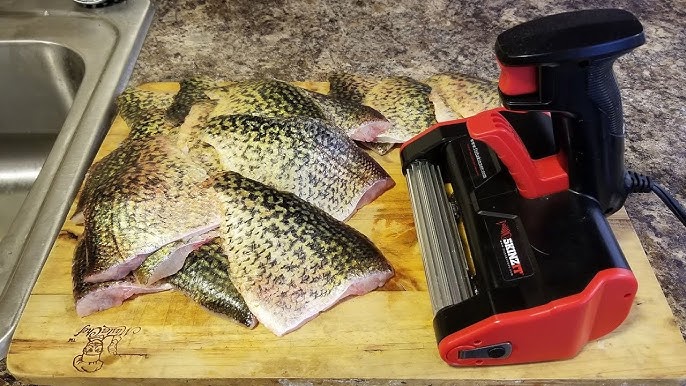10 years of experience as a food machinery equipment manufacturer
10 years of experience as a food machinery equipment manufacturer
Processing mackerel efficiently requires specialized tools to handle its sharp stingers and bones. The Mackerel Stinger Removal Machine offers a streamlined solution for both commercial kitchens and home users seeking precise fish preparation.

This electric device features stainless-steel rollers with micro-grooves designed to grip mackerel firmly. As fish pass through the adjustable feeding channel, rotating blades detach the dorsal stinger and lateral bones while preserving fillet integrity. The transparent safety guard allows visual monitoring during operation.
Step 1: Power the unit and let rollers reach optimal speed. Feed fish head-first into the insertion slot at a consistent pace.
Step 2: Maintain gentle forward pressure as rollers grip the fish. Avoid forcing; let mechanical action guide the spine removal.
Step 3: Catch processed fillets in the collection tray. Immediately check for residual bones using provided inspection tweezers.
Step 4: After each batch, rinse removable parts with food-safe cleanser. Use brush attachments to clear bone fragments from blade housing.
Examine fillets under bright light to confirm complete stinger removal. The machine typically achieves 98-99% bone-free results when properly calibrated. Any remaining micro-spines can be manually extracted with tweezers included in standard packages.
Traditional manual deboning requires approximately 8 minutes per fish with variable results. This automated system processes standard mackerel in under 40 seconds while reducing injury risks from handling stingers. Production kitchens report 50% reduction in fish preparation labor costs after implementation.
The removal mechanism demonstrates particular efficiency with Atlantic mackerel (Scomber scombrus) and Pacific chub mackerel (Scomber japonicus), commonly used in canneries and sushi production. Its adjustable settings accommodate juvenile to mature specimens ranging 15-60cm.
Should fillets emerge torn, verify roller tension isn’t excessive. Incomplete bone removal typically indicates blade wear or incorrect thickness settings. Motor stalling usually results from overfeeding; maintain recommended 5-second intervals between fish. Most units include diagnostic indicator lights to simplify issue identification.
Designed for integration into existing processing lines, this equipment requires standard 110V/220V outlets and minimal counter space. Safety certifications ensure compliance with food handling regulations across multiple regions. Optional mounting brackets enable permanent workstation installation when needed.

For operations prioritizing hygiene and speed, this dedicated deboning system reduces cross-contamination risks through contained bone disposal and minimized human contact. The automated process delivers uniform results unattainable through manual techniques, contributing to standardized product quality in high-volume environments.
